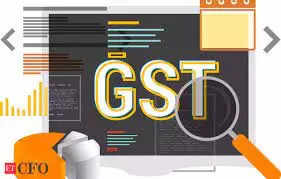- Tax, Legal & Accounting
- 2 min read
What are the essential checkpoints for GST compliance in FY25?
From annual submission form GSTR-4to verification and reconciliation of credit and cash balances on the GST portal, finance personnel need to cater to several GST related compliance during this fiscal.

Renewal/Application for Letter of Undertaking (LUT) for FY 2024-25: Businesses engaged in exports or supplies to SEZ units must apply for or renew their LUT to ensure uninterrupted tax-free operations.
Adoption of Composition Scheme for FY 2024-25: Small taxpayers should consider adopting the composition scheme to simplify GST compliance by filing Form CMP-02 by March 31, 2024.
Annual Return Submission FORM GSTR-4: Submit FORM GSTR-4 by April 30, 2024, to meet annual reporting requirements for taxpayers under the composition scheme.
QRMP Scheme Opt-in/Opt-out Decision: Assess suitability and decide on participation in the QRMP scheme by April 30, 2024, allowing for quarterly return filings and monthly tax payments.
Decision on FCM/RCM for GTA Supplies and Filing of Annexures V & VI: Decide whether to opt for the Forward Charge or Reverse Charge Mechanism in the GTA sector and file relevant annexures accordingly by March 31, 2024.
Reconciliation of Outward Supplies with GST Returns: Ensure sales and other outward supplies per accounting books match the details filed in GST returns (GSTR-1 and GSTR-3B).
Rate-wise Reconciliation between Books and GSTR-1: Perform thorough rate-wise reconciliations between books and GST filings to maintain compliance and accuracy.
Verification and Reconciliation of Credit and Cash Balances on GST Portal: Regularly check and reconcile credit and cash ledger balances on the GST portal against company books.
Invoice-level Reconciliation of GSTR 2B with ITC Register: Track and reconcile Input Tax Credit as recorded in GSTR 2B with the company’s ITC register to ensure accuracy and completeness.
Optimisation and Follow-up of Pending ITC Claims: Identify and address any pending ITC claims, ensuring corrections in vendors’ GSTR-1 filings where necessary.



COMMENTS
All Comments
By commenting, you agree to the Prohibited Content Policy
PostBy commenting, you agree to the Prohibited Content Policy
PostFind this Comment Offensive?
Choose your reason below and click on the submit button. This will alert our moderators to take actions